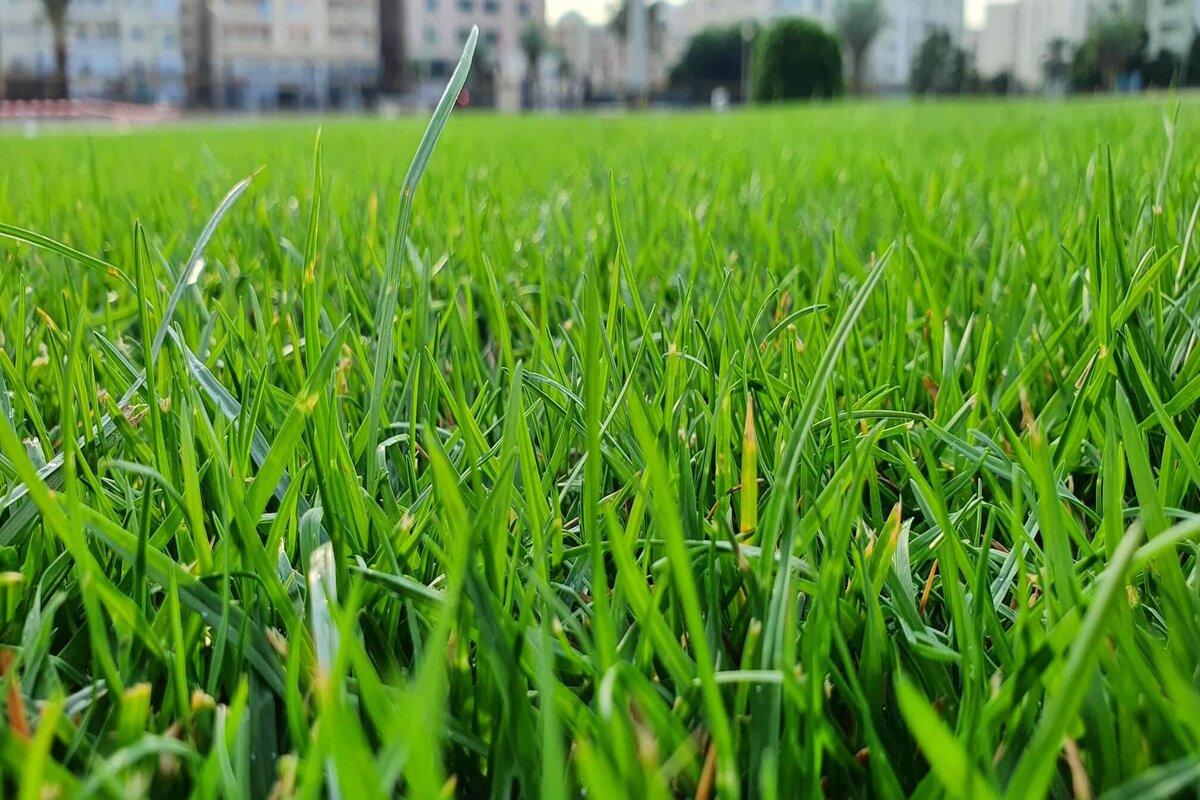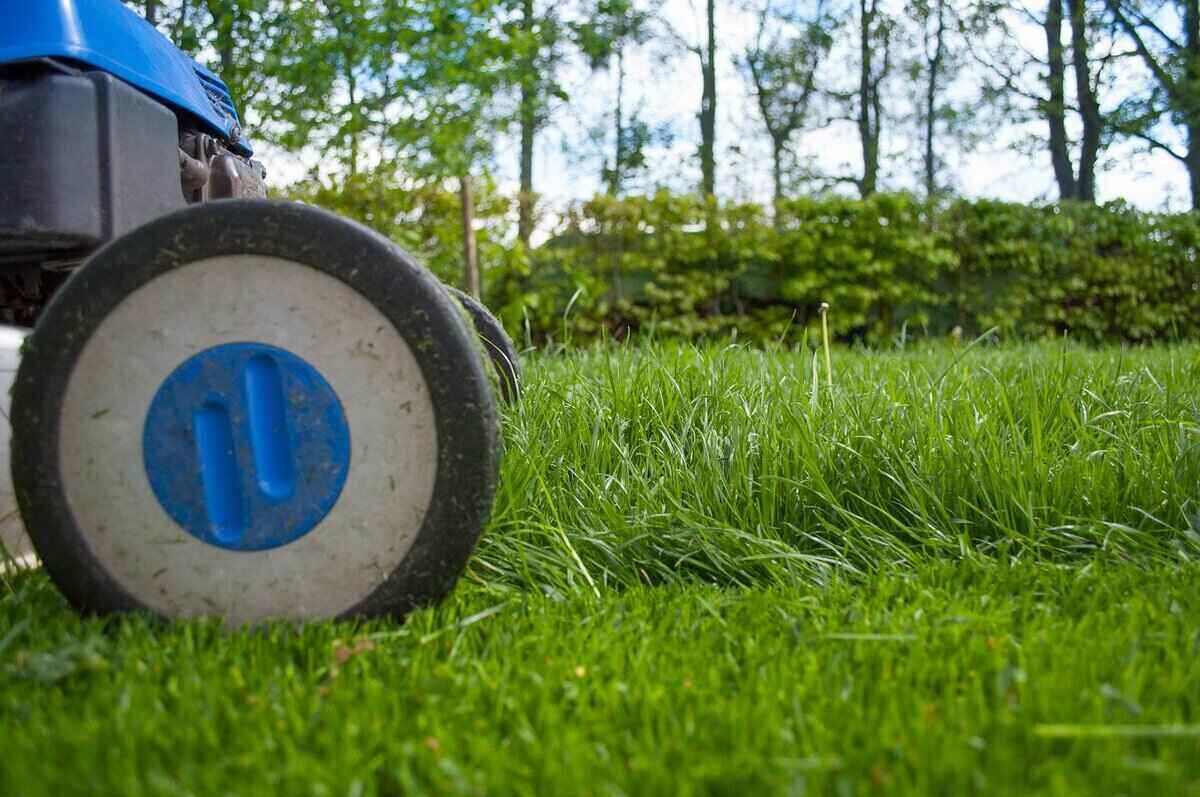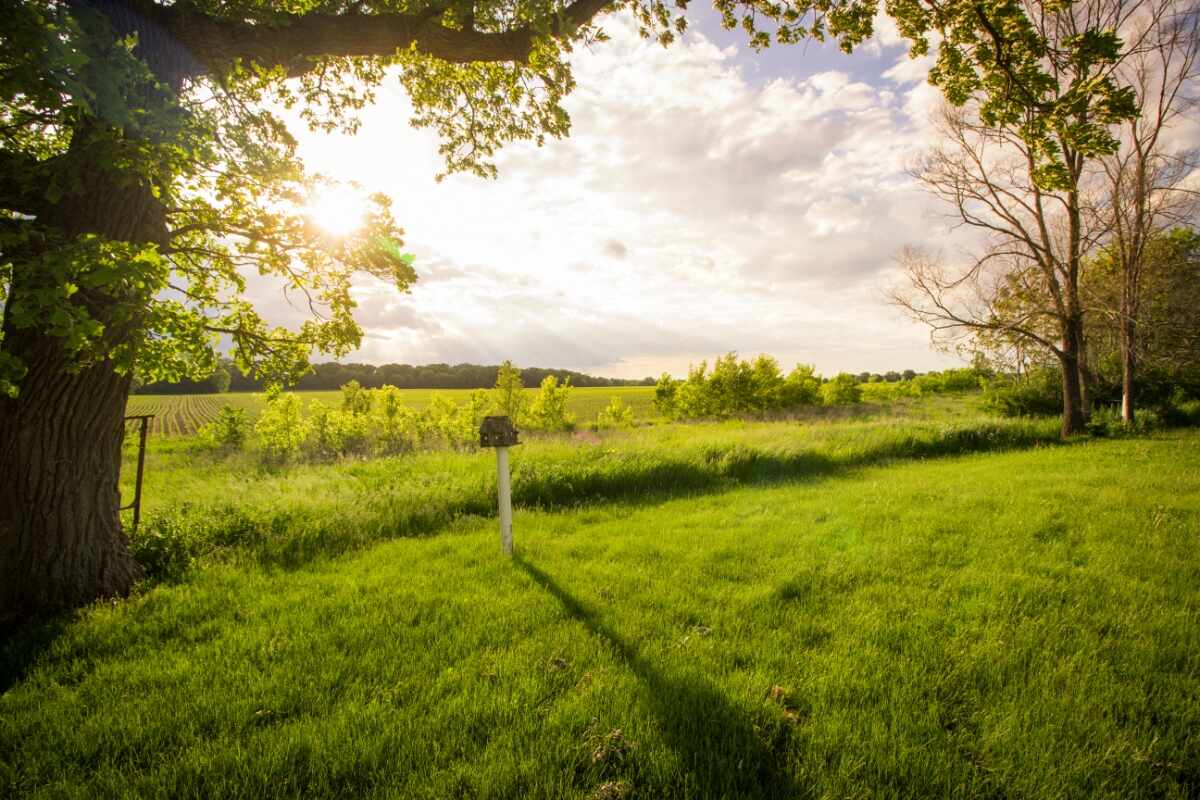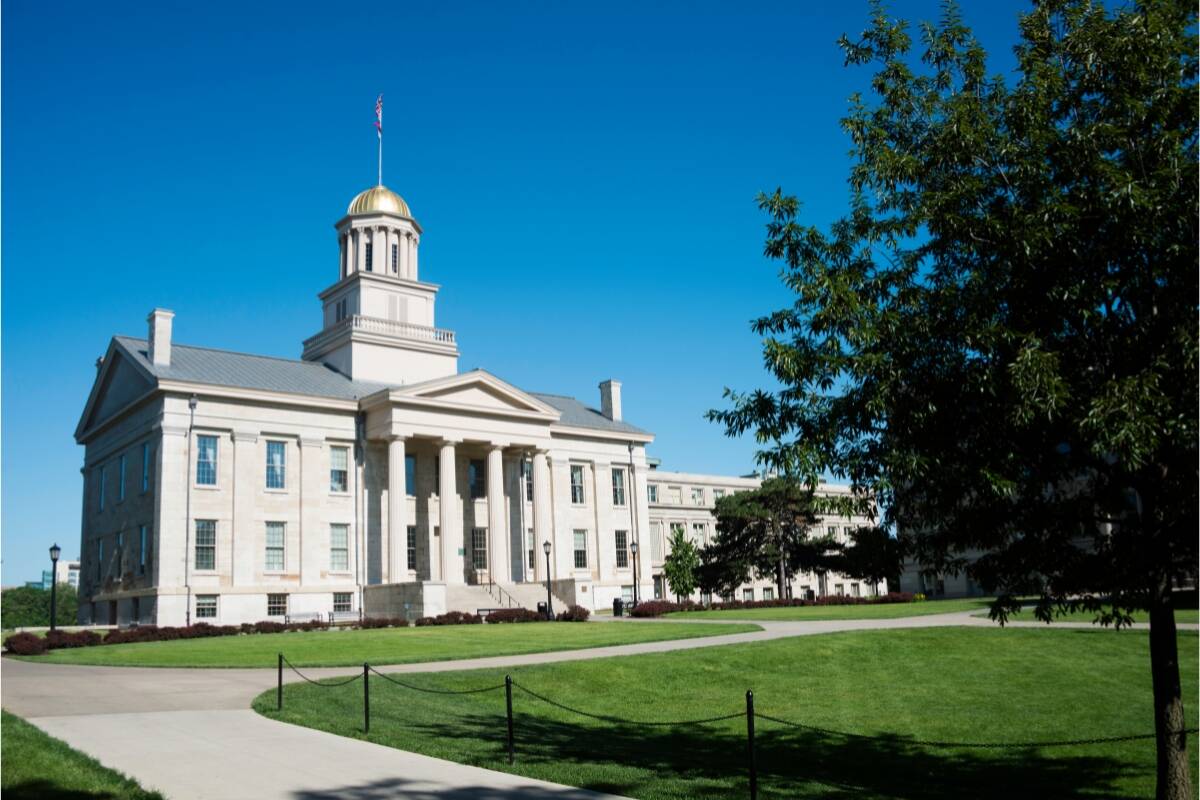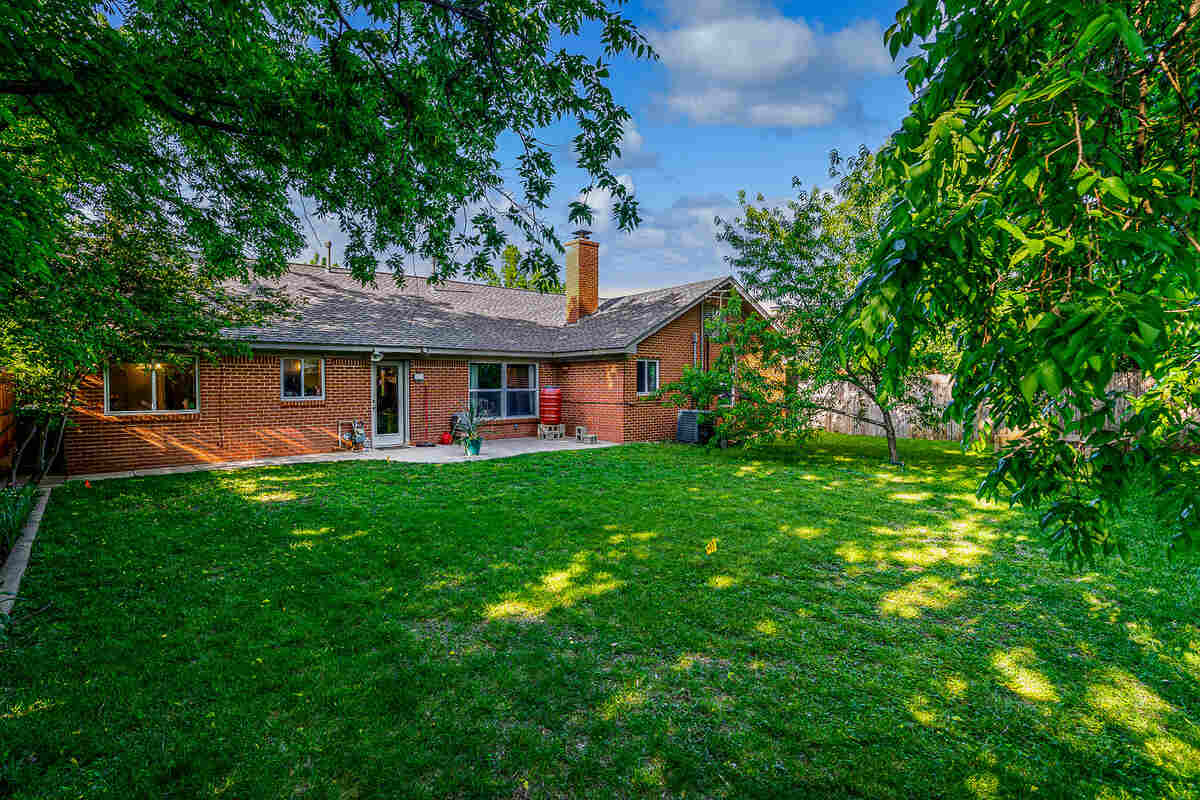
Beautiful Oklahoma, a vast state with “plen’y of room to swing a rope.” The weather also swings widely in the state. Located in the transition zone, hot summers make it difficult for cool-season grasses to adapt, while the winters are hard on warm-season ones. To offer a helping hand, we bring you the best grass seed for Oklahoma lawns.
Luckily enough, in the Sooner State, there’s also “plen’y of hope” for homeowners who want a great lawn. With the right turfgrass adapted for your area of the state, you can have a lush, green yard. We just don’t guarantee you’ll be able to grow “termayters” or “pertaters” in it.
If you’re busy watching the June bugs zoom across the prairie, skip to the end to read how to choose the best grass seed for your Oklahoma lawn.
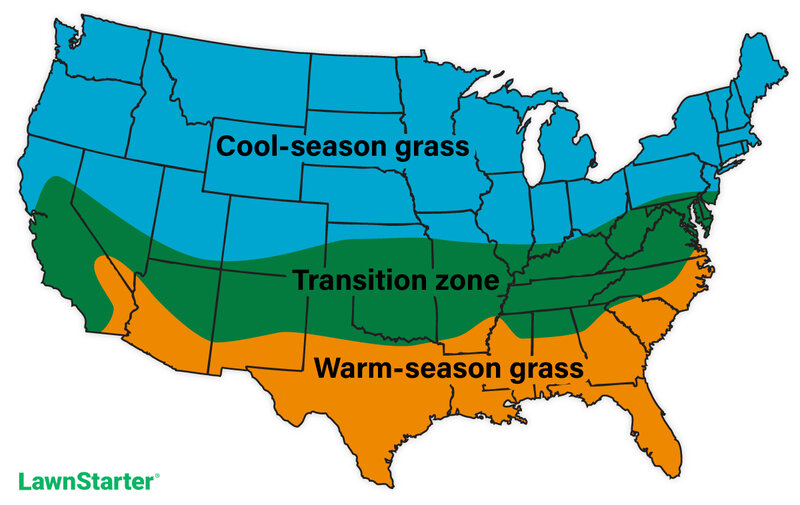
Warm-Season Grasses
Bermudagrass
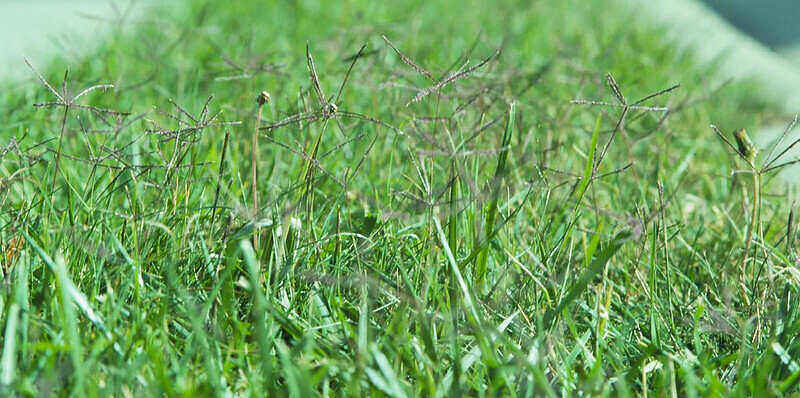
Photo Credit: Matt Levin / Flickr / CC BY-SA 2.0
Successfully grown statewide, Bermudagrass is an aggressive warm-season grass that is adaptable to a variety of soils and growing conditions. It thrives in hot temperatures, while also having sufficient winter hardiness. Its deep root system allows it to tolerate drought conditions well.
The common-type Bermuda cultivars, with a coarse texture and low density, are best suited for home lawns. Their maintenance needs are fewer than finer-textured, higher-density cultivars commonly used for athletic fields or golf courses. Bermudagrass can resist many common turf diseases and is an overall good option for homeowners in Oklahoma.
- Classification: Warm-season grass
- Spreads by: Stolons and rhizomes
- Shade tolerance: Low; thrives in full sun
- Drought tolerance: High
- Foot traffic tolerance: High
- Maintenance needs: Needs frequent mowing due to fast growth rate; develops thatch easily; needs regular fertilization
- Mowing height: Set the mowing height between 0.5 and 1.5 inches for hybrid Bermudagrass cultivars. Mow common Bermudagrass down to 1.5 to 2.5 inches.
- Potential for disease: Good resistance to disease, although diseases are common; low resistance to insects
- Soil pH: 6-6.5
- Soil type: Tolerates most soil types
- Other notes: If your lawn gets abundant sunlight and you are willing to invest the proper amount of care required, Bermudagrass can be an excellent option for your lawn.
Grass Seed Options:
– Scotts Turf Builder Bermudagrass (10-lb. bag)
– Hancock Seed Co. Bermudagrass (50-lb. bag)
Buffalograss
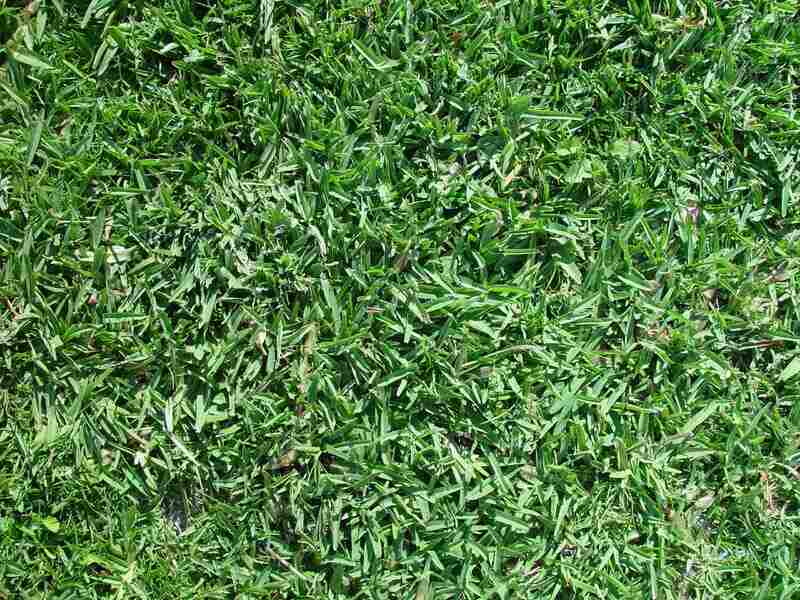
Photo Credit: Pixnio
Best adapted to western Oklahoma, buffalograss is a native prairie grass with a characteristic gray-green color. As a native grass, it’s perfectly fitted for lawns exposed to full sun and endures Oklahoma’s drought, heat, and cold temperatures well.
Because of its lower watering needs, buffalograss is a perfect choice for lawns without a sprinkler system installed. With no need for regular aeration and dethatching, this one is a good option to consider if you want a low-maintenance lawn. Buffalograss prefers loamy-clay soil.
- Classification: Warm-season grass
- Spreads by: Stolons
- Shade tolerance: Low
- Drought tolerance: High
- Foot traffic tolerance: Low
- Maintenance needs: Low fertilizer and mowing needs. Requires weed control.
- Mowing height: Set the mowing height between 2 and 3 inches.
- Potential for disease: Good tolerance against diseases and insects
- Soil pH: 6.5-7.5
- Soil type: Native loamy-clay soils, not sandy soils
- Other notes: The seed heads the grass produces may not be very aesthetically pleasing, but this is easily fixed with regular mowing.
Grass Seed Options:
– Everwilde Farms Buffalograss Seeds (1 lb. of seeds)
– Buffalograss seed (primed) (5-lb. bag)
St. Augustinegrass
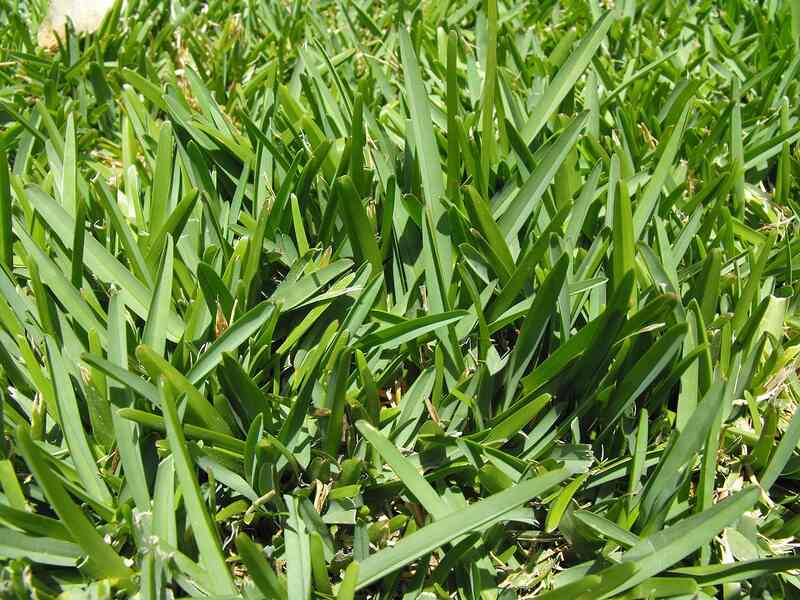
Suited to the extreme southeastern region of the Sooner State, St. Augustinegrass is known for its shade tolerance. Although it does well in full sun, St. Augustinegrass is well adapted to partial shade, being the most shade-tolerant of the warm-season grass types.
Though it requires better, more nutrient-rich soil than Bermudagrass, St. Augustinegrass is still manageable in different soil conditions. Its maintenance needs are on the higher side, requiring regular fertilization and more frequent watering than buffalograss, for example.
- Classification: Warm-season grass
- Spreads by: Stolons
- Shade tolerance: Moderate. It is the most shade-tolerant warm-season grass.
- Drought tolerance: Moderate to High
- Foot traffic tolerance: Low
- Maintenance needs: Needs frequent mowing due to fast growth rate; develops thatch easily; needs regular fertilization.
- Mowing height: Set the mowing height between 3.5 and 4 inches.
- Potential for disease: Moderate to high
- Soil pH: 6-7.5
- Soil type: Tolerates many soil types; prefers moderately fertile and moist (not waterlogged) soils; doesn’t tolerate soil compaction
- Other notes: St. Augustinegrass is also known for its medium to coarse-textured foliage that produces a beautiful carpet-like turf.
Grass Plug Options:
– Seed Ranch St Augustine Seville Grass Plugs (2 Trays)
– Seed Ranch St Augustine Floratam Grass Plugs (2 Trays)
Zoysiagrass
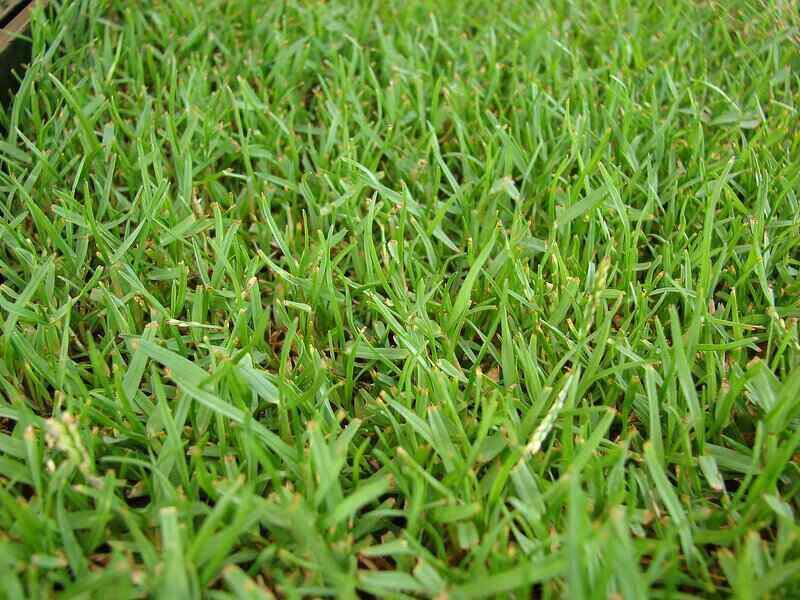
Photo Credit: Forest & Kim Starr / Wikimedia Commons / CC BY 3.0 US
If you’re looking for a tough lawn that will endure everything from cold winters to kids and pets running around, Zoysiagrass might be the one for you. With a high foot traffic tolerance, this turf produces fine to medium-textured, beautifully green foliage. Zoysiagrass is best-adapted to the eastern half of the state.
Zoysiagrass takes one to three seasons to establish itself, as it’s a slow grower. On one hand, this means less mowing, but the downside is that it also means a slow recovery from damage. Overall it’s a high-quality turf that comes with moderate to high-maintenance needs.
- Classification: Warm-season grass
- Spreads by: Stolons and rhizomes
- Shade tolerance: Moderate
- Drought tolerance: Moderate to High
- Foot traffic tolerance: High, but recovers slowly from damage
- Maintenance needs: Low nitrogen fertilization requirements, although, it’s prone to thatch build-up. Requires more water than Bermuda to maintain a hydrated lawn. Zoysia is considered a high-maintenance grass in Oklahoma.
- Mowing height: Set mowing height between 1 and 2 inches.
- Potential for disease: Good disease tolerance overall
- Soil pH: 6-6.5
- Soil type: Well-draining, some cultivars are more tolerant of a wide range of soils than others.
- Other notes: Frequent watering will be needed to prevent wilting. Meyer Zoysiagrass (Z-52) is the most widely available cultivar in Oklahoma.
Grass Plug and Seed Options:
– Zoysia Plugs (50 Large Grass Plugs)
– Zoysia Plugs (50 Full & Lush Grass Plugs)
– Zoysia Plugs (100 Plugs)
– Zenith Zoysia Grass Seeds (1/8 lb. of seeds)
Cool-Season Grasses
Perennial Ryegrass
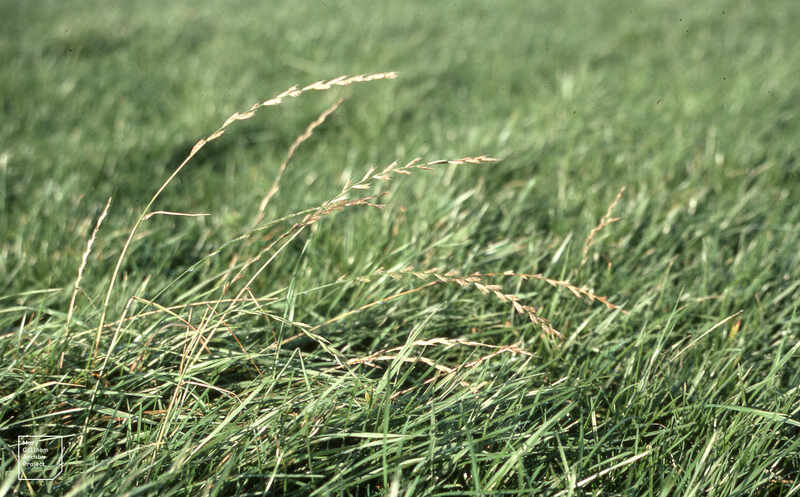
Photo Credit: Dr Mary Gillham Archive Project / Flickr / CC BY 2.0
Fit for the climate of the northern portion of Oklahoma, this cool-season grass is a quick grower that will crowd out weeds with a dense turf. It is commonly used to overseed dormant Bermudagrass lawns or to help with soil stabilization during the fall.
Perennial ryegrass is a good choice for irrigated areas since it will need a few sips of water during the summer heat, or it’ll lose its green color. But it won’t form thatch and has a high foot traffic tolerance. Its most significant downside is the high vulnerability to common lawn diseases.
- Classification: Cool-season grass
- Spreads by: Has a bunch-type growth habit
- Shade tolerance: Low*
- Drought tolerance: Low
- Foot traffic tolerance: High
- Maintenance needs: Moderate mowing and fertilization requirements. Thatch is not significant.
- Mowing height: Set the mowing height to 1.5 to 2.5 inches
- Potential for disease: High. Common diseases include gray leaf spot, red thread, and leaf spot/melting-out.
- Soil pH: Can grow in soils with a pH between 5 and 8, but prefers between 6 and 7.
- Soil type: Prefers good drainage and fertility, but can tolerate some poor drainage.
- Other notes: *Suitable for shaded sites in Oklahoma where warm-season grasses will not grow due to a high degree of shade. Will also persist in sunny sites with regular irrigation. Make sure you choose the right cultivar to ensure it will endure the hot summer conditions of the state.
Grass Seed Options:
– Outsidepride Perennial Ryegrass Seed (5 lbs.)
– Eretz ProTurf Perennial Ryegrass Fine Lawn Seed (choose your size)
Kentucky Bluegrass
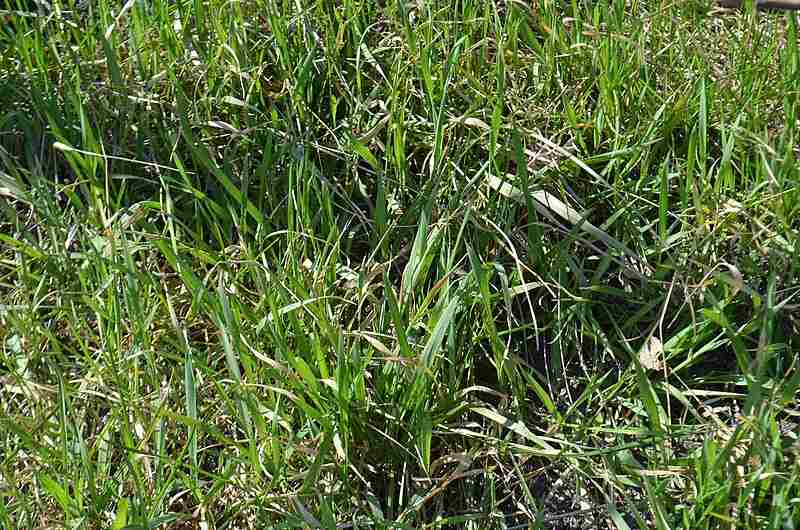
Photo Credit: Ethan2039 / Wikimedia Commons / CC BY-SA 4.0
This sun-loving turfgrass is also best adapted to the northern portion of the state. As its friend perennial ryegrass, Kentucky bluegrass (KBG) is also considered a high-quality turf with high-maintenance requirements.
Kentucky bluegrass has a moderate drought and foot traffic tolerance. Nitrogen fertilization and irrigation are needed frequently, and thatch formation is common. This grass will certainly provide you with a stunning lawn, but before making a decision, evaluate if you’re willing to care for this turfgrass as much as it needs you to.
- Classification: Cool-season grass
- Spreads by: Rhizomes
- Shade tolerance: Low, but requires regular irrigation if planted in a full-sun location in Oklahoma
- Drought tolerance: Moderate
- Foot traffic tolerance: Moderate
- Maintenance needs: Moderate mowing frequency and high fertilization needs.
- Mowing height: Set mowing height between 2.5 and 3.5 inches.
- Potential for disease: Moderate to high; prone to several diseases, such as dollar spot, leaf spot, necrotic ring spot, summer patch, and stripe smut.
- Soil pH: 6-7.5
- Soil type: Performs best in well-drained, heavy soils with high fertility.
- Other Notes: For improved performance in shaded lawns, this bluish-green colored grass is frequently mixed with turf-type tall fescue.
Grass Seed Options:
– Jonathan Green (11970) Blue Panther Kentucky Bluegrass Grass Seed (3 lbs.)
– SeedRanch Midnight Kentucky Bluegrass Seed (5 lbs.)
Tall Fescue

Aaron J. Patton, Ph.D. / Turfgrass Extension Specialist at Purdue University
Well adapted statewide, tall fescue is the most shade-tolerant cool-season grass in this article. It has excellent winter hardiness and sufficient heat tolerance. With moderate to high watering needs, this is all the effort it will take to care for tall fescue.
If you have a lawn with shady areas and an irrigation system, this dark-green colored turf might be a good low-maintenance option for you. Other advantages of opting for tall fescue are its resistance to most common lawn diseases and insignificant thatch production.
- Classification: Cool-season grass
- Spreads by: Produces short rhizomes but has a bunch-type growth habit
- Shade tolerance: Moderate
- Drought tolerance: Moderate to High
- Foot traffic tolerance: Moderate
- Maintenance needs: Frequent mowing. Does not produce significant thatch.
- Mowing height: Set mowing height to 2 inches when grass reaches 3 inches tall.
- Potential for disease: Tolerant of most diseases when properly maintained.
- Soil pH: 5.5-6.5
- Soil type: Adapted to a wide range of soil conditions, but prefers fertile clay soils with good drainage.
- Other Notes: Appropriate for shaded areas, where warm-season grasses struggle to grow, tall fescue can also thrive in sunny locations with consistent irrigation. For survival during the summer months, it is crucial to select a suitable cultivar option.
Grass Seed Options:
– Triple-Play Tall Fescue Grass Seed Blend (5000 sq ft)
– Eretz Kentucky 31 K31 Tall Fescue Grass Seed (choose your size)
– Pennington The Rebels Tall Fescue Grass Seed Mix (7 lb.)
How to Choose the Best Grass Seed for Your Oklahoma Lawn
Because Oklahoma is located in the transition zone, choosing the right grass seed for your lawn can be a challenge. To make things easier, we’ve gathered some of the main factors to consider:
Shade Tolerance
All kinds of grass need sunlight to grow and thrive, but some are better adapted to shady areas than others. Take a look at your yard area and notice if it’s always exposed to full sun or if it has shade. Then, consider these grasses’ shade tolerance:
- Low shade tolerance: Bermudagrass, buffalograss, Kentucky bluegrass*, perennial ryegrass*
- Moderate shade tolerance: St. Augustinegrass, Zoysiagrass, tall fescue*
*In Oklahoma, these three cool-season grasses can grow in lawns where warm-season grasses thin out due to high levels of shade. They can also work well in sunny sites with regular irrigation.
Drought Tolerance
One to two months of drought is a common occurrence in Oklahoma. If you don’t plan to use or install an irrigation system, the best option may be to invest in turfgrasses with a moderate to high drought tolerance:
- Low drought tolerance: Perennial ryegrass
- Moderate drought tolerance: St. Augustinegrass, Zoysiagrass, Kentucky bluegrass, tall fescue
- High drought tolerance: Bermudagrass, buffalograss
Maintenance Needs
The amount of time and money you are willing to spend caring for your lawn is also something to think about beforehand. For some, lawn maintenance chores are a pleasure, but for others, they are a nuisance.
- Low maintenance needs: Buffalograss
- Moderate maintenance needs: Perennial ryegrass, tall fescue
- High maintenance needs: Bermudagrass, St. Augustinegrass, Kentucky bluegrass, Zoysiagrass
Now is the Best Time to Call a Pro
“It ain’t too early and it ain’t too late” to start with a brand new lawn! Contact a professional to make choosing the right grass seed for your lawn as easy and “sweet” as “the smell of wavin’ wheat”. We have the best Oklahoma lawn care pros near you in Oklahoma City, Tulsa, Norman, Edmond, Del City, and many more cities across the Sooner State.
*Lyrics from Oklahoma! by Rodgers and Hammerstein
Main Image Credit: Bill Wilson / Flickr / CC BY 2.0
LawnStarter participates in the Amazon Services LLC Associates Program, an affiliate advertising program. LawnStarter may earn revenue from products promoted in this article.

